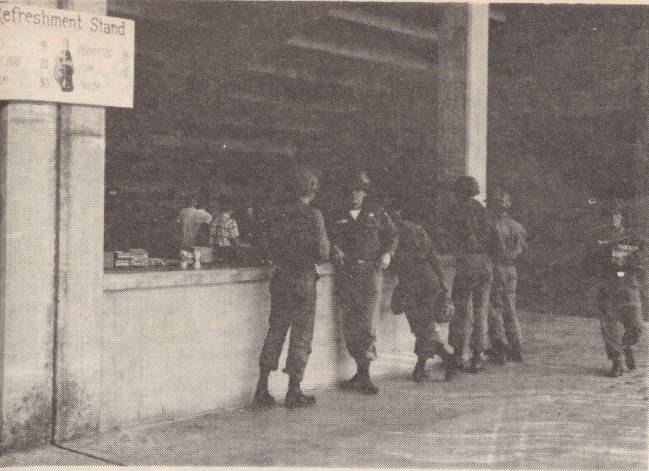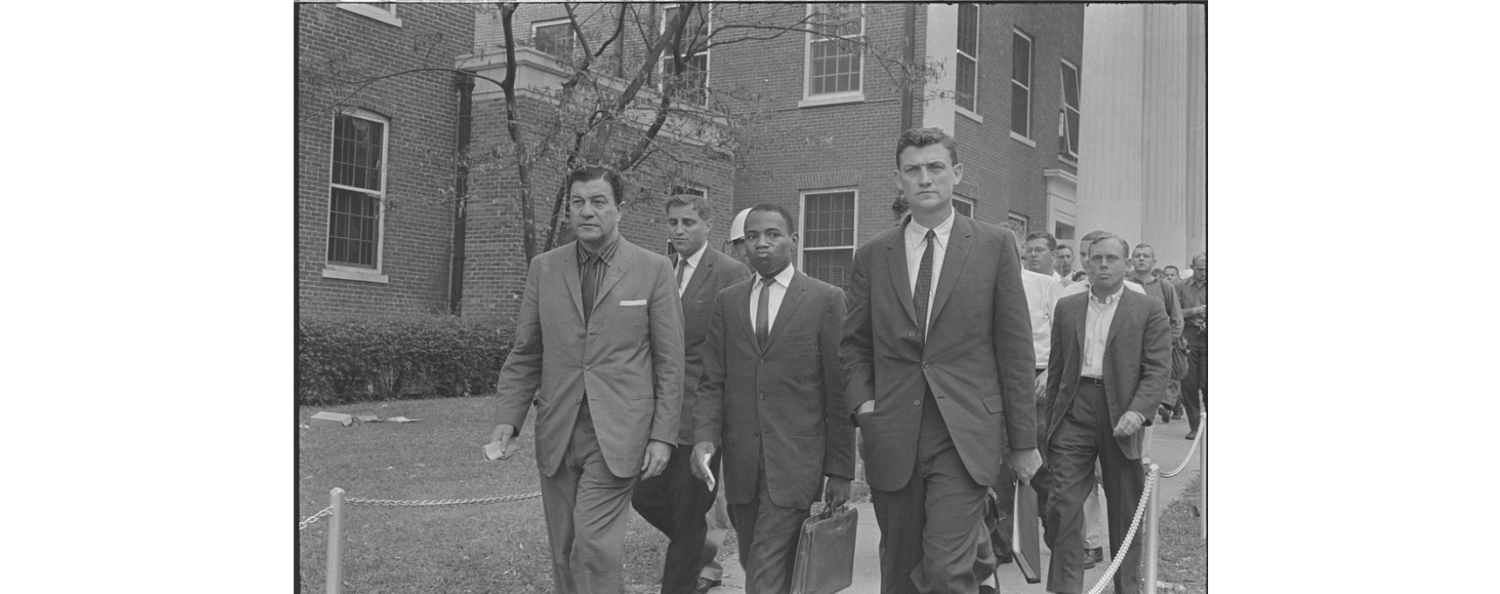#FlashbackFriday: 1962—The Exchange Plays a Supporting Role in a Key Civil-Rights Moment

In September 1962, James Meredith, a 29-year-old Air Force Veteran, tried to become the first Black student to enroll at the University of Mississippi. After being barred twice from registering, he sought help from the National Association for the Advancement of Colored People’s Legal Defense and Education Fund.
He also received help from Attorney General Robert F. Kennedy, who persuaded Mississippi Gov. Ross Barnett, initially an outspoken opponent of Meredith’s attending “Ole Miss,” to let Meredith enroll in the university. After he successfully enrolled, riots broke out in Oxford, the small town where the school is located.
National Guardsmen and other federal troops, including 150 military police Soldiers from Fort Hood (now Fort Cavazos), deployed to Oxford to ensure Meredith’s safety and the town’s. The troops arrived on Oct. 1, 61 years ago this weekend. A request for a PX to support them was received Oct. 2. On Oct. 4, a branch Exchange opened on at the university airstrip.

U.S. Marshals escort James Meredith to class after he became the first Black student to register at the University of Mississippi. Troops were called in to Oxford, Mississippi, after riots broke out when Meredith entered “Ole Miss” in 1962. Within 72 hours of a request for a PX to support the troops, the Exchange had one set up in the town. (Photo by Marion S. Trikosko via U.S. News & World Report Magazine Photograph Collection/Library of Congress)
Operated as a branch of the Fort Campbell Exchange in Kentucky, the quickly set-up PX was a joint effort of the Forts Campbell, Gordon, Benning and Keesler AFB exchanges. The workforce consisted of 18 associates from the three Army exchanges. (Fort Benning was renamed Fort Moore in May 2023; Fort Gordon will become Fort Eisenhower in late October.)
It was not a small operation, however. At its peak, the Oxford branch operated 10 outlets, including the main airstrip location and another location inside the National Guard Armory in Oxford. Because troops were bivouacked on the Ole Miss football team’s practice field, a concession stand at the field was converted into a retail outlet.
Associates slept in tents with stored merchandise. Total inventory was estimated at $80,000, most of it from Campbell and Benning, with supplemental items from Keesler.

This photo from the November 1962 Exchange Post shows troops at a concession stand at an Ole Miss football field that had been converted into an Exchange outlet.
Later in the month, the Cuban Missile Crisis occurred, and a large portion of Exchange resources had to be quickly concentrated to serve mobilized troops, this time mostly in Florida. The two events led the Exchange’s Southern Service Center to improve plans for preparing and responding to future emergencies.
In 2016, Fort Cavazos (then Hood) honored Meredith during a Black History Month observance. He met with three former Soldiers from Task Force Echo, assigned to Fort Hood’s 720th Military Police Battalion, 4th Army, who were among those who ensured Meredith’s safety in 1962.
It wasn’t exactly a reunion, though. Because Soldiers were working security on the campus perimeter and elsewhere, they did not meet Meredith in 1962. More than 53 years later, he said he was happy to meet them for the first time.
Meredith, who had transferred to Ole Miss from Jackson State College, received his bachelor’s degree from Ole Miss in 1963, receiving his diploma alongside his white classmates and becoming the first Black graduate of Ole Miss.
In June 2023, Meredith turned 90. He almost didn’t make it out of his 30s: In 1966, on the second day of a march from Memphis to Jackson to promote civil rights and voter registration, Meredith was shot three times. Other civil rights leaders, including Martin Luther King Jr., continued the march. Within three weeks, Meredith had recovered enough to join the march near its end.
The Associated Press reported that in the weeks leading up to his 90th birthday, Meredith had planned to replicate the 1966 march, this time urging people to obey the Ten Commandments and the Golden Rule to reduce crime, but instead made a series of public appearances often using a rolling walker, a wheelchair or a golf cart.
SOURCES: “One Hundred Years of Service: A History of the Army and Air Force Exchange Service”; Exchange Post archives; “James Meredith: Civil rights icon reunited with military escorts 53 years later at Fort Hood Black History Month Observance” by Spc. Jacqueline Dowland, 13th Public Affairs Detachment, Feb. 25, 2016; The Associated Press


